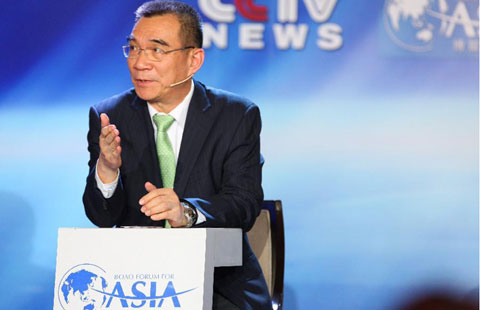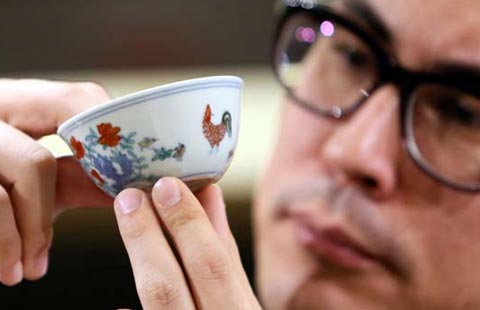Policies pursue new and better drugs through innovation
Updated: 2014-04-09 07:17
By Wang Hongyi in Shanghai (China Daily)
|
|||||||||
China is calling for closer ties among the bio-pharmaceutical industry, academic bodies and government departments so as to boost innovation in research and development.
In recent years, the Chinese government has pushed for the development of pharmaceutical and biotechnology industries, and emphasized the need for creative R&D, especially to develop new drugs with intellectual property rights. Despite this, how to increase the efficiency and productivity for drug innovation in China has been a great concern for the industry, government and researchers.
"To establish an ecosystem that combines industry, education and research will be a way to help bring forth the innovation in the world," says Jiang Mianheng, president of ShanghaiTech University and president of the Chinese Academy of Sciences Shanghai branch.
"We attach great importance to the cooperation with domestic and overseas bio-medical companies," he adds.
As an emerging technology university in China, ShanghaiTech was established with the support of the municipal government in 2012, with a vision to be a dynamic research and teaching hub. So far, three out of its six schools and institutes, namely, Life Science, Advanced Immunochemcial Studies and iHuman, are focusing their research on next-generation drug discovery and development.
"Now the pharma industry's R&D already relies more on global collaboration," says Joseph Cho, managing director of the China Association of Enterprise with Foreign Investment. "Talent, funding and techniques come from different areas."
The bio-pharmaceutical industry has been one of the most dynamic and innovative industries in the world. An explosion in science and technology has been seen over the past two decades, paving the way for new medicines to treat diseases, such as cancer, diabetes and heart conditions. For example, the US city of Boston, with its renowned universities such as Harvard and MIT, has attracted a new wave of R&D centers for many leading pharmaceutical companies.
According to a report released by Pharmaceutical Research and Manufacturers of America, there are more than 5,000 new and innovative medicines in the global development pipeline to treat or prevent a wide array of both rare and common diseases. About 70 percent of these medicines are potential first-in-class innovations, with a high proportion in areas of unmet medical need like cancers, neurology and infectious disease.
However, the whole industry is still in the early stages of learning how to apply biology, biochemistry and information technology, according to Robert J. Hugin, chairman of PhRMA.
"The cost to develop a new medicine is $1.2 billion and rising, and yet the potential for a return on that significant investment remains highly uncertain," Hugin said in Shanghai earlier this year.
In addition to providing new incentives for medical innovators, he says, China must establish a robust regulatory system that guarantees drug quality and safety, a health system that provides timely and broad patient access to novel therapies, and a policy environment that rewards innovation and protects intellectual property rights.
International market research firm IMS Health predicts that China will become the second-largest pharmaceutical market in the world by 2015.
wanghongyi@chinadaily.com.cn
(China Daily 04/09/2014 page22)

 Chinese schools vie in moot court
Chinese schools vie in moot court
 Australian divers start underwater search for MH370
Australian divers start underwater search for MH370
 Cleaver-wielding man subdued after tense standoff
Cleaver-wielding man subdued after tense standoff
 Pro-Russian demonstrators announce Kharkov's independence
Pro-Russian demonstrators announce Kharkov's independence
 Breakdancer 'freezes' in front of Paris landmarks
Breakdancer 'freezes' in front of Paris landmarks
 TV Debate in Boao Forum for Asia Annual Conference
TV Debate in Boao Forum for Asia Annual Conference
 Ming Dynasty 'chicken cup' sells for record $36 million
Ming Dynasty 'chicken cup' sells for record $36 million
 Simply child's play
Simply child's play
Most Viewed
Editor's Picks

|

|

|

|

|

|
Today's Top News
Rwandans told 'never again'
Kim Jong Un reelected first chairman of NDC
Blast kills 23 in market on edge of Pakistani capital
Cross-border deals headed south?
Two more 'pings' detected in search for MH370
China urges US to restrain Japan
Moscow warns Kiev of 'civil war'
Asia Society in NYC launches think tank
US Weekly

|

|








